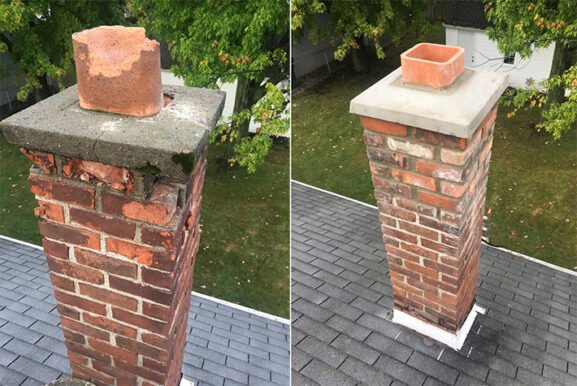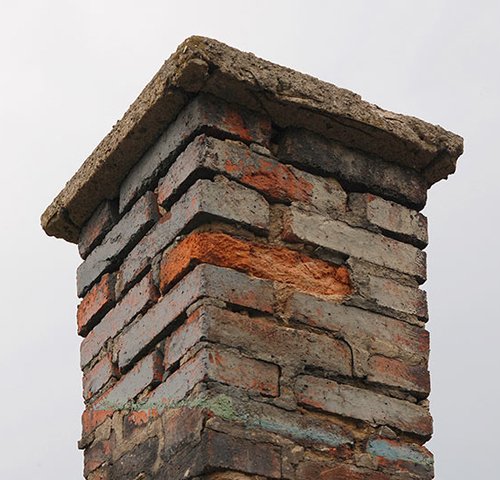How Much to Repair a Chimney Depends on These Key Factors Homeowners Shouldn’t Ignore
Key Takeaways
- Chimney repair costs can range from a few hundred to several thousand dollars depending on the issue and material involved
- Common repairs include masonry work, flue relining, crown replacement, and fixing water damage
- Regional factors like labor rates and climate exposure can significantly influence the final price
- Regular inspections help detect small issues early, saving homeowners from larger repair bills later
Understanding the Range of Chimney Repair Costs
Chimneys play a vital role in home safety and comfort, especially in regions with cold winters. But over time, exposure to heat, moisture, and outdoor elements can take a toll on their structure and function. One of the most common questions homeowners ask is how much it costs to repair a chimney. The answer isn’t always straightforward, but understanding the variables involved can help you plan and budget wisely.
Typical chimney repair costs in the United States range from $300 to over $5,000, depending on the extent of the damage, the materials used, and the type of repair needed. In some cases, especially for full chimney rebuilds or extensive flue work, costs can exceed $10,000.
Common Types of Chimney Repairs and Their Costs
Each type of chimney issue comes with its own pricing. Some are cosmetic or minor, while others may involve structural integrity or fire hazards.
Masonry Repairs
Cracked or crumbling bricks and mortar are among the most common chimney issues. Minor tuckpointing or mortar joint repair may cost $300 to $800, while rebuilding sections of a chimney can range from $1,000 to $3,000 or more depending on height and accessibility.
Masonry issues should not be ignored. Over time, water intrusion through cracked mortar can weaken the structure and lead to internal damage that’s far costlier to fix.
Chimney Crown Repairs
The crown is the topmost layer of the chimney that prevents water from seeping into the masonry. If cracked or deteriorated, it can lead to leaks and structural damage below. A basic crown patch may cost $150 to $400, while a full crown replacement could be $800 to $2,000 depending on materials and size.
According to the Chimney Safety Institute of America (CSIA), water penetration is the leading cause of chimney deterioration (CSIA), and the crown is one of the first lines of defense.
Chimney Flue and Liner Repairs
The flue or liner directs smoke and combustion gases safely out of the home. A damaged flue poses serious safety risks, including the potential for chimney fires or carbon monoxide leaks. Flue relining costs vary widely, from $2,000 to $5,000, depending on liner material (clay, stainless steel, or cast-in-place) and the height of the chimney.
For homes that burn wood or coal, the liner tends to degrade faster, making timely replacement even more critical.
Flashing Repairs
Flashing is the metal seal where the chimney meets the roof. If this area fails, it can lead to leaks and roof damage. Replacing flashing generally runs between $300 and $1,500. The final price depends on the roof slope and whether new materials like copper or lead are used.
Flashings that are poorly installed or corroded are often the hidden source of water stains on ceilings or walls near the chimney.
Waterproofing and Sealants
While not technically a repair, chimney waterproofing is a proactive measure that can prevent damage. This process costs $150 to $500, depending on the chimney’s height and the type of sealant used. It’s especially recommended in areas prone to freeze-thaw cycles, which can accelerate masonry deterioration.
Factors That Influence Chimney Repair Prices
Several factors contribute to the wide range of chimney repair costs. Understanding them helps you make better decisions and avoid surprises.
Height and Accessibility
Tall chimneys or those located in hard-to-reach areas can increase labor costs. If scaffolding or special safety equipment is required, expect a higher estimate. Similarly, chimneys with steep roof pitches may cost more to access safely.
Regional Labor Rates
Where you live plays a significant role in the cost of repairs. Areas with higher labor costs or increased demand for skilled masons will typically have higher repair rates. For example, urban areas in the Northeast tend to be more expensive than rural regions in the Midwest or South.
Chimney Material
Brick, stone, stucco, or metal chimneys each have different repair needs and costs. Stone chimneys are often more expensive to repair due to the materials and craftsmanship involved, while prefabricated metal chimneys may be cheaper but often require full component replacements.
Permit and Inspection Requirements
Some chimney repairs may require a building permit or code inspection. Fees vary by municipality but can add $50 to $500 to the total cost. In historic homes, there may also be additional code requirements or restrictions, which can drive up labor and material costs.
Why Chimney Repairs Should Not Be Delayed
Delaying chimney repairs can lead to more serious and costly issues down the line. A minor crack today might turn into a full rebuild a year from now if moisture gets inside the structure. Moreover, some chimney issues—especially those involving the flue—can directly impact indoor air quality and safety.
Insurance policies often do not cover damage that results from neglected maintenance. That means fixing problems early is not just a safety measure but also a financial one.
Practical Ways to Manage Chimney Repair Costs
If your chimney needs work, there are several smart strategies to manage the costs without compromising safety or quality.
Get Multiple Quotes
Always get estimates from at least two or three licensed chimney professionals. This gives you a better understanding of the fair market price and may uncover different options for repair methods.
Schedule Repairs Off-Season
Spring and early summer are often the best times to schedule non-urgent chimney work. In fall and early winter, demand surges, and you may face higher rates or longer wait times.
Prioritize Urgent Issues
If your budget doesn’t allow for full restoration, ask the contractor to identify the most urgent issues first. Safety-related repairs, like fixing a damaged flue or crown, should come before cosmetic or minor masonry work.
Taking Preventive Steps to Reduce Future Costs
The most effective way to avoid high repair bills is through regular maintenance. An annual chimney inspection can catch early signs of wear and tear before they become major problems. A level one inspection usually costs between $100 and $300, which is a small price to pay for peace of mind.
In addition, cleaning the chimney once a year—especially if you use a wood-burning fireplace—prevents creosote buildup, which is a major fire hazard and a contributor to liner degradation.
Even small steps like installing a chimney cap or applying waterproof sealant can extend the life of your chimney and reduce long-term repair needs.
Planning Your Chimney Repairs With Confidence
Whether you’re dealing with minor mortar cracks or a damaged flue liner, understanding the scope and cost of chimney repair helps you plan smarter. Every home is different, and each repair job comes with its own challenges and pricing variables. But being informed allows you to make decisions that protect your home and budget in the long run.
By addressing problems early, comparing professional estimates, and sticking to a regular inspection schedule, you can keep your chimney safe, functional, and efficient for years to come.

